Although there is no exact science behind germination, a basic understanding of the topic will help you get your seeds off to a good start. In a nutshell, you can just state that the ideal soil temperature for germination is approximately 25 degrees Celsius. That is, of course, predicated on ideal circumstances. A temperature chart can guide you through the process if you want to germinate seeds successfully.
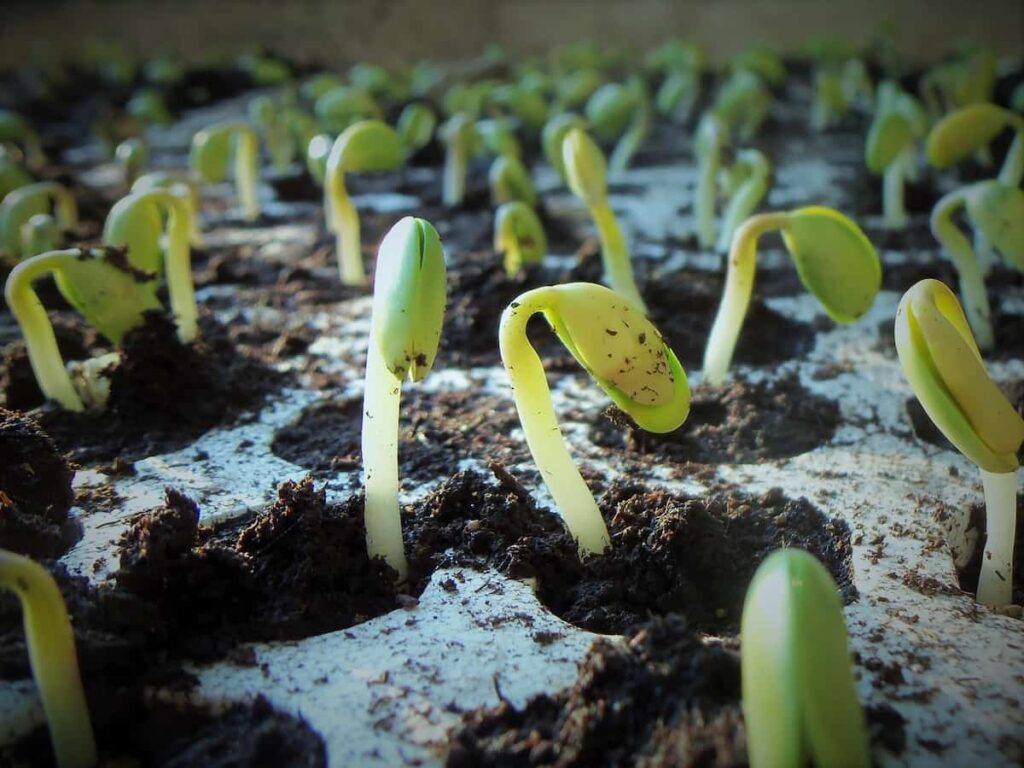
Below we learn the seed germination charts for different fruits, vegetables, plants, and herbs, the optimal temperature range for different crops, and the seed germination time for different plants.
Seed germination chart in India
How long does it take for vegetable seeds to germinate?
The average time for a vegetable seed to germinate is 7-14 days. Whether or not you provide the ideal settings can greatly affect how fast they germinate. Soil is necessary for the majority of seeds to germinate. However, light is essential for germinating certain seeds, such as flower seeds. Therefore it’s best just gently to cover them. There’s more to a seed package than simply a lovely image of the plant you’re trying to grow.
The other side also contains a wealth of information. Don’t rush into planting seeds without first reading the instructions carefully. The seed company will note on the seed packaging whether a certain vegetable has specific soil temperature requirements. To have a successful garden, you need your seed starting calendar detailing when to plant each seed based on your typical last frost date. Look at the back of the package to double-verify when you should plant your seeds.
What vegetable seeds germinate the fastest?
Seeds of lettuce and other cabbage family members (such as bok choi, broccoli, kale, cauliflower, etc.) germinate quickly. Seeds like peppers, eggplants, fennel, and celery can take five days or more to germinate. Tomatoes, beets, chard, squash, and onions, among others, will require another three days. Plant them as soon as you see roots developing. Have you ever spread a full package of 300 seeds only to have three plants survive? The soil dries out with time, whereas a paper towel keeps its moisture content constant.
Germination rates are almost perfect when we use fresh seeds purchased from a reliable seed supplier. You can try sprouting them on a paper towel to determine whether many years old seeds are still viable. Seeds as old as five years can produce thriving plants, whether cabbage or tomatoes. Some seeds have a rather long shelf life if you keep them in a cold, dry environment. This method also helps us determine whether the fresh seeds we purchased are of high quality.
In case you missed it: Vegetable Seed Germination Chart: A Calendar to Time and Soil Temperature
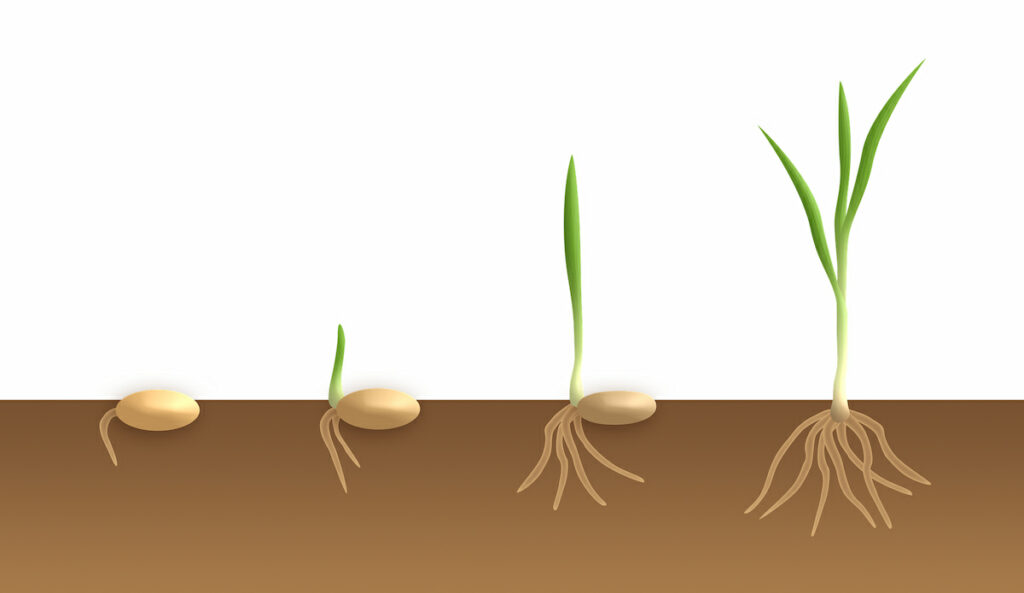
Which seed will grow in 2 days?
Because lettuce sprouts so rapidly and easily, you can make it your first choice. It can be grown with little effort, just on your kitchen counter. The small lettuce seeds make spreading them individually difficult. Arrange a few seeds to run horizontally over the top of the container. To grow lettuce microgreens, you need just scatter seeds across the soil’s surface.
Protecting lettuce from the hot sun improves its flavor, although it can bear as little as 4 hours of sunshine. They thrive in milder climates, and many species can withstand light cold. Turnips and radishes are two of the easiest and lowest-maintenance vegetables to germinate. Turnip seeds are quite small, so you can sow them in whatever pattern you choose, in rows or blocks, Just like you would with lettuce. As their numbers increase, thin them out as necessary.
Root vegetables like turnips and radishes need careful handling while being planted in the garden. These veggies could be grown successfully indoors if a bigger container is used. Growing these plants requires more sunlight than lettuce, but a bright window should do the trick. It’s okay to cut the leaves and consume them; you may take the bulb if you want. In the kitchen, chives make a wonderful tabletop herb. Chives can be seen germinating only a few days after planting.
Furthermore, they perform well at room temperature; just keep them in a sunny window. A further benefit is that the leaves can be eaten at any stage of their development. Be sure to never remove more than half of the leaves at a time. Making beans sprout is very easy, and it’s also fast. Beans are among the simplest plants to grow from seed. Take them outside after frost danger has passed.
While bush beans can thrive in a container, pole beans need a larger, more open environment to spread and climb. Seeds of brassica vegetables like broccoli, cauliflower, and kale germinate easily. Still, the resulting plants are often too large to be grown in an apartment or small house unless you have a greenhouse. For example, bok choy is one of the many brassicas that sprout quickly and require little care.
What is a good germination rate?
Determine whether your seeds are still within the time frame for germination. This is typically seven to ten days for peas and beans but just six to eight days for radishes. It can take longer for others. It’s important to start monitoring for germination as soon as the germination window opens and continue doing so every day until the final germination date has passed. Think about how many of your seedlings have germinated.
That’s fantastic news if seven out of ten seeds have germinated. An impressive 70% of your seeds have germinated. A germination test’s success rate doesn’t have to be perfect. You should plant two seeds to maximize your chances of having at least one seed germinate at each planting station. Start again if your seed germination rate is less than 50%. Generally speaking, you should replace your seeds if they haven’t sprouted after two weeks.
In case you missed it: How to Grow Moringa Tree from Seeds in Backyard: Planting and Care in Winter
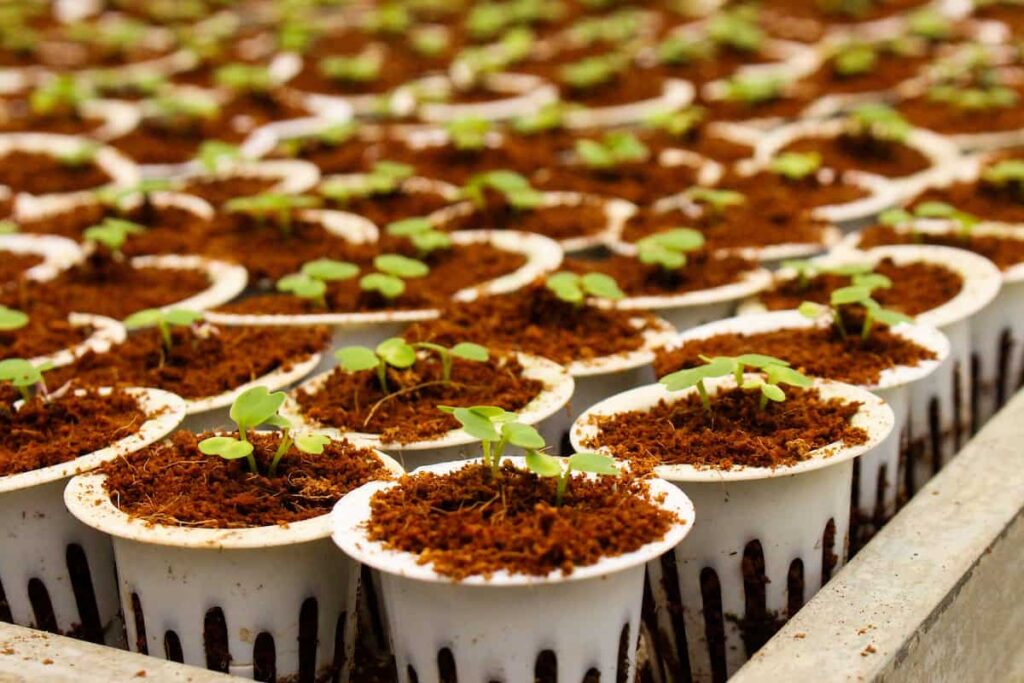
Which fruit seeds germinate quickly?
Although berries are botanically defined fruits, the majority of people do not consider them to be in the same category as other types of fruits when it comes to eating. Strawberries, blackberries, and raspberries are examples of some of the fruits that grow at an increasing rate. Some certain fruits and vegetables break the norm that it takes longer for them to mature than it does for most fruits and vegetables.
Which fruit tree grows faster in India?
In India, the papaya tree is known for its rapid growth. Planting a papaya tree is one of the easiest things to do, and the fruit it provides is readily available throughout the year. The tree’s development depends on having access to light, water, and healthy soil. The fruits of papaya trees can be harvested at any time of the year, providing people with several opportunities to improve their overall health.
What is the fastest germinating flower seed?
The most well-known flower of summer, the sunflower is also one of the first to germinate. If you don’t have much room, dwarf sunflower seeds in a well-drained container or garden bed will grow to 6-14 inches. The phlox flower is a splash of color, with shades ranging from baby blue and pink to purple and white for a touch of summertime excitement.
The annual species, which grows to be approximately 2 feet tall, and flowers from early to midsummer, can be very easy to grow. This is a pollinator favorite, so seed in a sunny place with rich, wet soil. Marigolds are perfect for any gardener. They’re also fantastic as companion plants. So, plant some marigolds beside your tomato, cucumber, and summer squash plants and watch them flourish.
In case you missed it: How to Grow Oregano from Seed to Harvest: Check How this Guide Helps Beginners
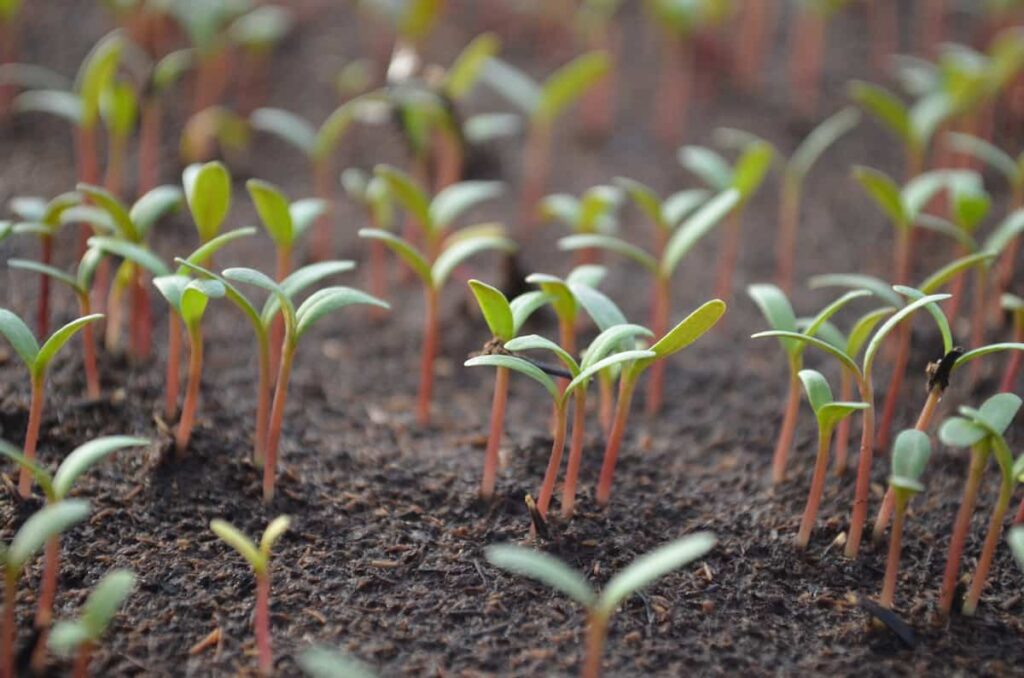
What month do you plant flower seeds?
Planting occurs between August and November, although it can extend until April. Winter cold can break the dormancy of seeds, allowing them to germinate more successfully if planted outdoors. You can use potting soil, peat moss, or fine sawdust to cover the seeds with a 1/2 to ¾-inch layer. The ideal planting depth for seeds is just as long as the seed itself. These watering guidelines should be followed in locations with less precipitation or later planting in the planting season.
Soak the fresh soil where the seeds will be planted and continue until the seedlings have sprouted. After they have been established, most plants don’t need as much watering unless they are wetland species. If you water blooming plants when they are in bloom, the flowers will last longer. The most cost-effective and least wasteful option is peat moss; the least expensive options are sawdust and potting soil.
Choose one of these and apply it in a 1/2′′ to 3/4′′ layer on top of your soil. Applying one of these on top of the existing soil can help prevent the growth of numerous weeds in your flowerbed. Water will help the seeds sink into the moist soil, where they can germinate and thrive. While the seeds are developing, make sure the soil is consistently wet. Most seeds need about a week or two to germinate. Most flower species need less watering when they have become well-established.
What is the best way to germinate flower seeds?
Moisten a paper towel or coffee filter and use it to start germinating seeds. Pick a towel that doesn’t break when it gets wet. This type of towel or cloth absorbs moisture and reduces seed lint, which can produce mold. As roots can’t grow through coffee filters, this method makes transplanting seedlings to soil a breeze.
To plant seeds, stuff a moist paper towel or coffee filter with them and place it in a plastic sandwich bag. Avoid squeezing the air out of the bag when you close it to prevent mold growth. Place the bag in a warm (65–75 degrees Fahrenheit) location, such as a southern window or a sunroom. Keep an eye out for mold on the seeds and moisture in the towel. If your towel dries out, spray it with water.
In case you missed it: How to Propagate Prickly Pear Cactus from Cuttings, and Seeds: Planting, Growing Indoors, Outdoors, and Care
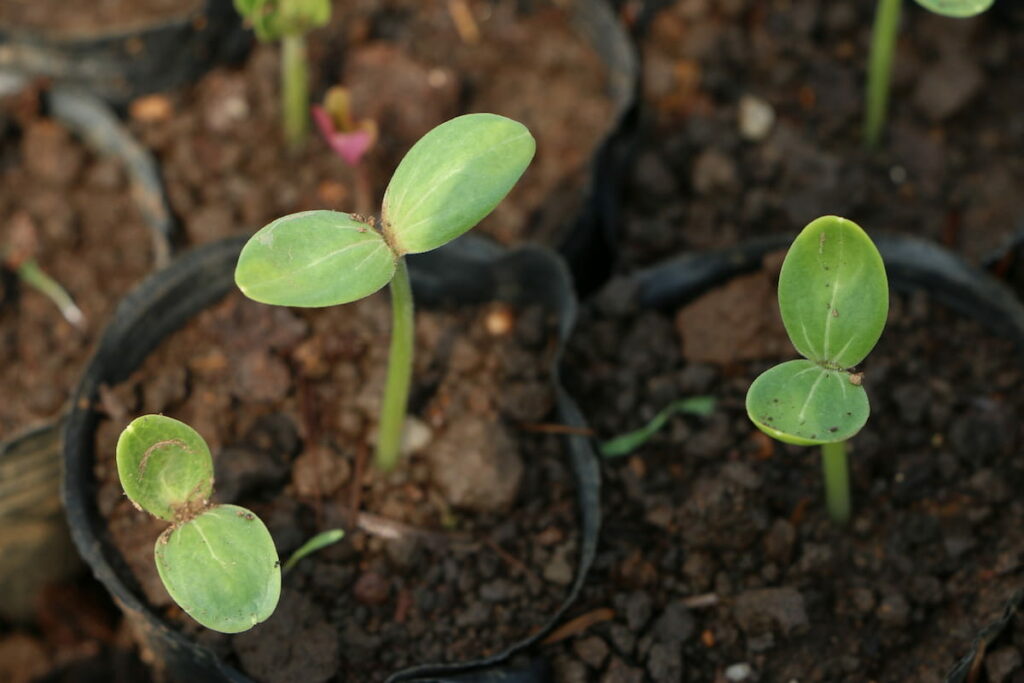
In a week or so, the seeds should start to sprout. Move the seed to wet soil after development has begun. Sprinkle tiny seeds directly into the soil’s surface without covering them, then bury larger seeds at the depth indicated on the seed package. At planting time, if the root develops into the towel, snip the towel around the root and bury it along with the root.
The tough seed coat of certain seeds prevents them from receiving the necessary moisture to germinate. Sweet peas, shell beans, nasturtium, and morning glory are all examples. Soaking the seeds in water for a full night is recommended for seeds like these. Gardeners typically use hydrogen peroxide because it disinfects the solution and breaks down the tough seed covering. You can use a mixture of 50% water and 50% peroxide.
How long does it take to grow flowers from seeds?
Most annual flowers take roughly 95 days from seed to blossom. However, this information is rarely included in flower seed packs. When grown in spring climates, most flowers bloom in 60 to 70 days and can withstand mild cold, seeds can be started inside under lights in late winter to give plants a jump start on the season, and cloches can help them acclimate to life outside.
Seed Germination Chart in India for vegetables
| Vegetable | Germination temperature (degrees C) | Germination time |
| Corn | 10-20 | 4-10 days |
| Potato | 15-29 | 4-6 weeks |
| Cauliflower (early) | 25-27 | 7-10 days |
| Cauliflower (late) | 16-20 | 7-14 days |
| Cauliflower (midseason) | <16 | 7-10 days |
| Turnip | 15-35 | 4-10 days |
| Tomato | 20-30 | 10-14 days |
| Spinach | 10-22 | 1-2 weeks |
| Radish | 10-30 | 5-7 days |
| Peas | 10-22 | 7-14 days |
| Onion | 10-32 | 6-12 days |
| Lady’s finger | 20-32 | 7-15 days |
| Lettuce | 20-27 | 7-10 days |
| Broad Beans | 16-30 | 10-14 days |
| Cucumber | 16-32 | 7-10 days |
| Carrot | 10-30 | 8-10 days |
| Capsicum | 15-25 | 3-4 days |
| Cabbage | 10-20 | 7-10 days |
| Broccoli | 21-23 | 10-14 days |
| Bottle gourd | 20-30 | 7-8 days |
| Bitter gourd | 20-30 | 8-10 days |
| Beetroot | 10-30 | 5-8 days |
| Apple gourd | 20-30 | 2-4 weeks |
| Chilli | 15-35 | 7-10 days |
| Drumsticks | 25-30 | 5-12 days |
| Ivy gourd | 20-30 | 7-10 days |
| Brinjal | 15-35 | 7-14 days |
| Cluster beans | 10-30 | 20-30 days |
| Ridge gourd | 25-30 | 7 – 14 days |
| Snake gourd | 24-27 | 10-30 days |
| Shallots | 20-25 | 7-10 days |
| Sweet potatoes | 16-29 | about 4 weeks |
| Yam | 17-35 | about a month |
In case you missed it: How to Grow Zinnias from Seeds: Guide and Steps to Propagation, Planting, and Care
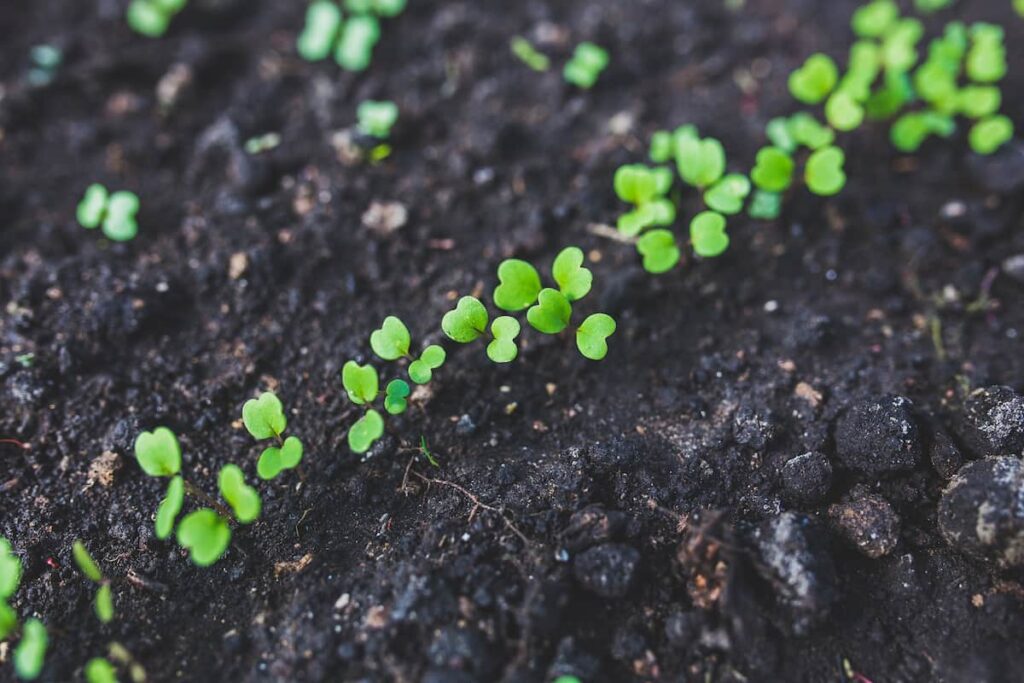
Seed Germination Chart in India for flowers
| Flowers | Germination temperature (degrees C) | Germination time |
| Hibiscus | 15-35 | 2-3 weeks |
| Jasmine | 15-30 | 4-6 weeks |
| Ageratum | 20-25 | 7-10 days |
| Hollyhock | 10-25 | 10-14 days |
| Snapdragon | 18-24 | 10-21 days |
| African daisy | 15-23 | 15-20 days |
| China aster | 21-22 | 10-14 days |
| Cockscomb | 20-30 | 7-14 days |
| Cornflower | 15-26 | 7-10 days |
| Spider plant | 13-27 | 14-20 days |
| Indian pink | 20-25 | 7-14 days |
| Sunflower | 21-29 | 7-10 days |
| Balsam | 15-25 | 4-5 days |
| Forget me not | 18-22 | 8-14 days |
| Petunia | 10-35 | <7 days |
| Phlox | 20-25 | 5-10 days |
| Bougainvillea | 15-23 | 20-30 days |
| African marigold | 18-30 | 4-14 days |
| French marigold | 20-50 | 7-14 days |
| Zinnia | 23-29 | 7-10 days |
| Rose | 16-21 | 4-8 weeks |
| Lotus | 25-30 | < 1 week |
| Dahlia | 21-23 | 7-10 days |
| Plumeria | 18-25 | 3-14 days |
| Lily | 18-25 | 9-18 days |
| Daisies | 18-21 | 10-20 days |
| Iris | 15-25 | 28-35 days |
| Pansies | 10-25 | 1-3 weeks |
| Poppy | 20-25 | 7-14 days |
| Canna | 21-24 | 7-14 days |
| Chrysanthemum | 20-28 | 10-15 days |
Seed Germination Chart in India for fruits
| Fruits | Germination temperature (degrees C) | Germination time |
| Watermelon | 25-30 | 6-7 days |
| Banana | 10-30 | 2-3 weeks |
| Orange | around 25 | 6-8 weeks |
| Pineapple | 21-23 | around 6 months |
| Lychee | 23-32 | 1-4 weeks |
| Mango | 5-40 | 2-4 weeks |
| Strawberry | 12-18 | 7 days-6 weeks |
| Grapes | 25-32 | 10-15 days |
| Custard apple | 18-30 | 3 weeks |
| Sapota | 10-38 | 2-4 weeks |
| Lemon | 15-21 | 1-2 weeks |
| Kinnow | 25-30 | 7-14 days |
| Mosambi | around 25 | 3-4 weeks |
| Papaya | 25-30 | 2-3 weeks |
| Pear | 20-32 | 2-4 weeks |
| Peach | 20-37 | 1-3 months |
| Apple | 21-24 | around 30 days |
| Figs | 15.5-21 | 1-2 weeks |
| Plums | 20-30 | 10-18 days |
| Jackfruit | 23-27 | 3-8 weeks |
| Guava | 20-25 | 2-8 weeks |
| Pomegranate | 15-33 | 30-40 days |
| Apricot | 18-28 | 1-2 months |
| Apple ber | 18-31 | 2-4 weeks |
| Kiwi | 20-25 | around 2 weeks |
| Rambutan | 22-35 | 10-21 days |
| Persimmons | 12-26 | 2-3 weeks |
| Jamun | 22-40 | 10-15 days |
| Coconut | 20-40 | 3-5 months |
Seed Germination Chart in India for herbs
| Herbs | Germination temperature (degrees C) | Germination time |
| Cumin | around 18 | 7-14 days |
| Coriander | 18-21 | 2-3 weeks |
| Fenugreek | around 15 | 3-5 days |
| Mustard | around 28 | 7-10 days |
| Holy basil | 15-21 | 7-12 days |
| Ginger | 20-22 | 6-8 weeks |
| Turmeric | 20-35 | 6-10 months |
| Lemon grass | 21-23 | 2 weeks |
| Parsley | 20-32 | 7-10 days |
| Sage | 25-35 | 10-21 days |
| Curry leaves | 20-25 | 10-15 days |
| Dill | 15-21 | 10-14 days |
| Mint | 15-25 | 7-15 days |
| Oregano | 20-35 | 1 week |
| Rosemary | 20-27 | 15-25 days |
| Thyme | 15-20 | Up-4 weeks |
| Tarragon | 15-20 | 10-14 days |
| Chives | 15-21 | 7-10 days |
Conclusion
Even without additional heat, the majority of seeds will germinate, but using a heat mat allows for growth that is both faster and more healthy. For the best possible outcomes, put the germination containers in a basement or garage where the temperature is consistently cold. We believe that will be adequate to get you moving in the right direction.
The good news is that nature is often fairly forgiving, so you shouldn’t stress too much about reaching perfection. Because, at the end of the day, relaxing in the garden is what it’s all about. If you live in the following states and plan to grow vegetables, fruits, herbs, and flowers, this guide would help you to understand the basics of seed germination duration and temperature.
- Effective Fish Pond Construction Techniques for Beginners
- Irrigation and Water Management in Pineapple Farming
- Blossom to Harvest: Mastering Flowering and Pollination in Papaya Farming
- Pig Fattening Essentials: From Selection to Sale for Beginners
- Raising Wagyu Cattle: A Complete Guide for Premium Beef Production
- Soil Types and Their Water Holding Capacity
- Optimizing Irrigation Schedules for Coconut Groves for Enhanced Yield
- Espresso Your Garden: Coffee Grounds for Healthier Acid-Loving Plants
- The Best Soil Mix for Snake Plants: How to Mix Your Own Snake Plant Soil
- Green Thumb Success: Expert Tips for Cultivating Greenhouse Beans All Year Round
- Bloom All Year Round: The Ultimate Guide to Indoor Hyacinth Care
- Eco-Friendly Gardening: How to Make Liquid Fertilizer from Kitchen Waste
- Ultimate Guide to Grow Anise in Pots: Explore Seed Propagation to Harvesting
- Guide to Raising Chester White Pigs: Discover Breed Facts to Growth Management
- Mastering the Elegance: The Ultimate Guide to Weeping Cherry Tree Care, Planting, and Maintenance
- Ultimate Guide to Planting Garlic in Grow Bags: Growing Strategies for Beginners
- How to Fix Spider Plant Leaf-Related Problems: Natural and Organic Remedies
- 10 Reasons Why Your Tulsi Plant is Shedding Leaves: Home Remedies and Solutions
- Optimizing Growth and Yield: The Advantages of Palm Bunch Ash Fertilizer
- Utilizing Neem Oil Extract as a Natural Pesticide for Hydrangea
- From Soil to Harvest: Various Ways in Which Farmers Can Use AI Tools
- Steps to Encourage and Induce Citrus Flowers: A Comprehensive Guide
- How to Fix Snake Plant Leaf-Related Issues: Natural and Organic Remedies
- Transform Your Garden into a Fragrant Oasis with Raat Ki Rani (Night Blooming Jasmine)
- Discover the Ideal Chicken Breeds for Philippine Farms
- How to Create a Poultry Egg Farm Business Plan for Profits
- Grow Lemon Cucumbers Like a Pro: Insider Techniques for Bountiful Yields
- Ultimate Guide to Caring for Your Pink Princess Philodendron: Tips for Thriving Variegation
- Areca Nut Profit Per Acre: Calculating Yield and Cost of Cultivation
- How Kaveri Chicken is Becoming a More Profitable Breed in Indian Backyards
- Transform Your Barn: 9 Steps to Convert a Horse Stall into a Chicken Coop
- Exploring Suffolk Sheep Disadvantages with Limitations and Challenges
- Guide to Solving Potted Lemon Tree Problems: How to Revive Lemon Tree in Containers
- Steps to Encourage Female Pumpkin Flowers: Best Strategies for More Flowers and High Yields
- Ultimate Guide to Yellow Raspberries: Exploring from Planting to Care
- Ultimate Guide to Planting Ginger in Grow Bags: Growing Strategies for Beginners
